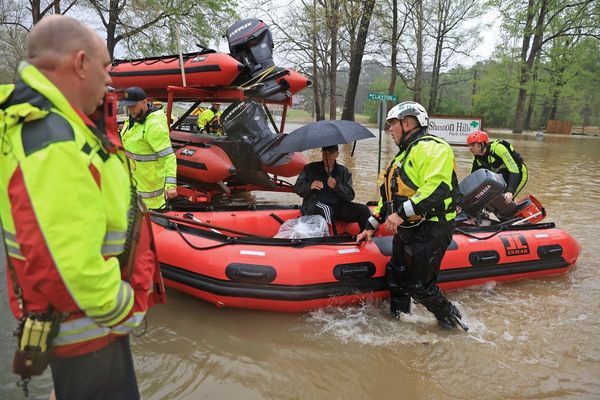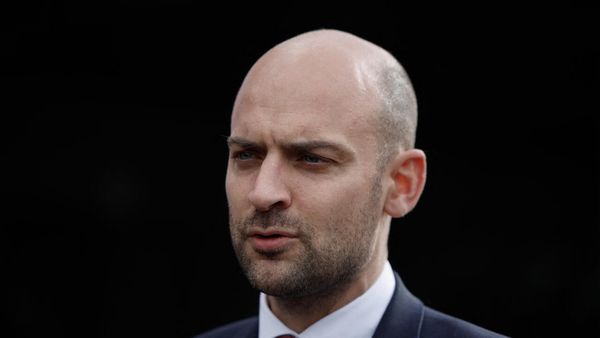
The first time AJ Brown felt rain on their chest after getting top surgery, it felt like it was “meant to be”. It was 2am in the small coastal town of Berrara, and it was storming. AJ, then 47, arrived home drenched and exhilarated, unused to no longer being burdened by chest binders to give their body a less typically feminine appearance. Assigned female at birth, AJ had only publicly come out as non-binary in middle age.
“I can’t explain the feeling … there was a release,” they say.
“Like – ‘oh my god, I’m free, I can run around naked and be everything’. And then you remember society hasn’t caught up with you.”

In the media, the representation of people coming out as trans and gender diverse is often focused on teenagers and young adults. Yet older people are increasingly coming out well into their retirement, buoyed by services that didn’t exist in their youth.
It’s difficult to estimate the gender diverse population in Australia. 2016 was the first census to provide an “other” option, and counted 1,260 sex and/or gender diverse people nationally.
But this is expected to have been substantially under-reported and wider research is limited.
LGBTQ+ health provider Acon’s acting director of community health, Teddy Cook, says all its services are “absolutely overflowing”, with a greater number of people affirming their gender at a later age.
“This is a cohort of trans people who have known who they are for a very long time and the environments in which they grew up wasn’t a place they could be respected and affirmed,” Cook says.
“They’ve been treated throughout their life as a gender they’re not, that’s a traumatising experience going through life not being understood.

“Older trans people are more likely to experience trauma and harm and to be rejected, to lose so much more than money.”
Before Brown came out as non-binary , they struggled with wearing clothes and with the experience of puberty.
“I’d think I was in drag being a woman,” they say.
Now 54, Brown has been taking testosterone for seven years and their hormone level is the equivalent to that of an 18-year-old man.

Brown serves as president of Trans Pride Australia – set up in 2017 to provide a wealth of resources for people who began transitioning later in life and shed parts of their former lives.
“We really are the trailblazers,” Brown says. “We’ve come from generations where we’ve never actually felt relaxed enough to embrace just being ourselves.”
AJ’s partner, Anna Pye, lived a middle-class Australian life and attended a boys school in her teens. It took her until she was 52 to begin transitioning – however, “the thoughts were always there”.
“For me at 15 to come out as trans, I would not be alive,” she says. “I’m sure I would’ve been brutally abused. Even at 40 I don’t think it would’ve been as possible.”
When Pye did come out, she’d been living as a straight white male, in a loving heterosexual relationship with two children. But she was lying – to her partner and herself.
“I was always Anna, there wasn’t a choice,” she says.
“When I got to 52, it wasn’t a choice. It was a matter of, I had to [come out], or I wasn’t going to be here. And unfortunately, I lost a lot of people from that path.”
It took 12 months between Pye telling her partner how she was feeling to walking out the door as a woman. The day she did was the same day their relationship ended.

Five years later, despite having top surgery, facial surgery, chest implants and some liposuction, Pye remains unable to change her gender marker to female in New South Wales.
“I was on the table for seven and a half hours, it cost me close to $65,000 … [but] I have to have an ‘M’ on my birth certificate,” she says.
Gender can be changed on federal documents without past procedures or hormone therapy, but to alter state documentation like drivers licences in NSW, statutory declarations are needed from two medical practitioners to confirm the person has had genital surgery.
While Pye has had hormone replacement, she hasn’t had lower surgery – her age and the cost being a large factor.

Pye says mandating full corrective surgery to affirm gender makes her feel “lesser than the person I am”, and is economically prohibitive for many trans women.
“Just the anaesthetist was $650 an hour … I was dumbstruck,” she says. “A lot of the girls can’t afford that.”
Acon found trans people face prices of anywhere from $20,000 to more than $100,000 for surgeries at multiple sites (like top and bottom).
Cook says focusing on surgical intervention as a way to affirm gender also has a pathologising effect, particularly for older trans people.
“Being able to prove you’re woman enough or male enough is at great detriment to the health of trans people, particularly people unable or who don’t want to be sterilised,” he says.
“The barriers people experience is really about not being respected and affirmed for who they are.”
Retired academic and activist Dr Jesse Hooley has come out and transitioned twice – once in the mid 1980s and again in the early 2000s.
In 1996, Hooley was an instrumental figures in putting the Transgender Anti-Discrimination Act through the NSW parliament.
“Transitioning is a very long and slow process. We are always in the process of becoming,” she says. “For some trans people, there are detours, there are stalls, there are complete reversals.

“All the time, you’re weighing up all the negatives possible about the process … from adolescence into adulthood … because [of] the consequences in terms of loss of job, loss of career, loss of friends … the expense of surgery and the trauma of it.”
Hooley says coming out, particularly later in life, comes with “discrimination, verbal abuse, violence [and] rejection”, often dependent on how well you “passed”.
“It’s difficult to pass fully unless you’ve been given puberty blockers, and none of us had the opportunity to have those,” she says.
“It is easier to live as a trans woman now … most people are wonderful to me. Our struggles for recognition, as well material and legal justice are similar to the struggles of other groups such as women, gays, lesbians and people living with disabilities: we are part of progressive politics.
“It’s vital for human flourishing to be recognised for who you are. We’re human beings just like you are, we have needs, we’re different from some of you and we’ve struggled for a long time to become who we are.”

When Pye reflects on her life since coming out, she’s drawn to a moment of uninhibited joy four months into taking hormones.
“I walked down a set of stairs and felt my breasts move,” she says. “It sounds really silly but … I was like, ‘oh my god, I can feel movement’, and that was so exciting for me.
“I body-shame myself. I feel dysphoria. [But] I love who I am. There’s no way I’d change who I am right now, because my life has changed immensely since the day I walked out of my door as Anna.
“I’m not a different person, I’m more of the person I should be.”







